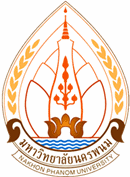ปัจจัยที่มีผลต่อการเลือกบำบัดทดแทนไตของผู้ป่วยไตวายเรื้อรัง ตามแบบแผนความเชื่อทางสุขภาพในอำเภอศรีสงคราม จังหวัดนครพนม
Factors Associated with the Selection of Renal Replacement Therapy among Patients with Chronic Renal Failure as Based on the Health Belief Model Employed in Sri Songkhram District, Nakhon Phanom Province
คำสำคัญ:
ไตวายเรื้อรัง, บำบัดทดแทนไต, แบบแผนความเชื่อทางสุขภาพบทคัดย่อ
การวิจัยเชิงประยุกต์นี้ มีวัตถุประสงค์เพื่อศึกษาสถานการณ์ผู้ป่วยไตวาย ปัจจัยที่มีผลต่อการเลือกวิธีการบำบัดทดแทนไต โดยศึกษาข้อมูลย้อนหลังผู้ป่วยไตวาย ที่ขึ้นทะเบียนในโรงพยาบาลศรีสงครามทั้งหมด ในปี พ.ศ. 2561-2563 จำนวน 4,367 คน คัดกรองตามเกณฑ์ด้วยอัตราการกรองของไต จำนวน 507 คน วิเคราะห์ข้อมูลทั่วไปด้วยสถิติเชิงพรรณนา วิเคราะห์ปัจจัยที่มีผลต่อการตัดสินใจด้วย Multiple Logistic Regression เก็บข้อมูลเชิงคุณภาพด้วยการสัมภาษณ์เชิงลึก จำนวน 15 คน สนทนากลุ่มจำนวน 12 คน นำข้อมูลมาวิเคราะห์เชิงเนื้อหา
ผลการศึกษา พบว่าผู้ป่วยไตวายเรื้อรังระยะสุดท้ายจำนวน 507 คน คิดเป็นร้อยละ 11.6 ระยะที่ 4 ร้อยละ 52.90 ระยะที่ 5 ร้อยละ 47.10 พบมากในเพศหญิงร้อยละ 60.20 อายุเฉลี่ย 68.94 ปี ±11.8 SD อัตราการกรองของไตเฉลี่ย 15.93 ± 8.91 ml/min/1.73m2 ในกลุ่มเลือกบำบัดทดแทนไต อัตราการกรองของไต เฉลี่ย 7.22 ± 6.75 .m/min/1.73m2 เมื่อเทียบกับค่ามาตรฐานพบว่า กลุ่มผู้ป่วยสามารถรักษาอัตราการกรองของไตได้สูงกว่าอัตรา การกรองของไตกลุ่มประคับประครองเฉลี่ย 18.05 ± 8.05 ml/min/1.73m2 เมื่อแบ่งกลุ่มการตัดสินใจเลือกบำบัดทดแทนไต (Renal Replacement Therapy) ออกเป็น 2 กลุ่ม โดยที่กลุ่มที่ 1 เป็นกลุ่มที่เลือกบำบัดด้วยการดูแลแบบประคับประคอง กลุ่มที่ 2 เป็นกลุ่มที่ตัดสินใจบำบัดทดแทนไตด้วยการฟอกเลือด พบว่ากลุ่มประคับประคองสามารถดูแลตัวเองให้อัตราการกรองของไตสูงกว่าเกณฑ์ ปัจจัยที่มีผลต่อการเลือกบำบัดทดแทนไตของผู้ป่วยไตวายเรื้อรัง ในอำเภอศรีสงคราม จังหวัดนครพนม ประกอบด้วย eGFR โรคร่วม อายุ และพื้นที่บริการ โดยที่ผู้ป่วยในเขต ที่มีระดับ eGFR ดี และอายุมาก จะตัดสินใจเลือกการดูแลแบบประคับประครอง (Palliative care) มากกว่ากลุ่มที่ตัดสินใจบำบัดทดแทนไต (Dialysis) และผู้ป่วยนอกเขตที่มีภาวะไตเสื่อม จะตัดสินใจเลือกบำบัดทดแทนไต (Dialysis) และเลือกเข้ารับบริการในคลินิกไต มากกว่าการดูแลแบบประคับประครอง (Palliative care)




